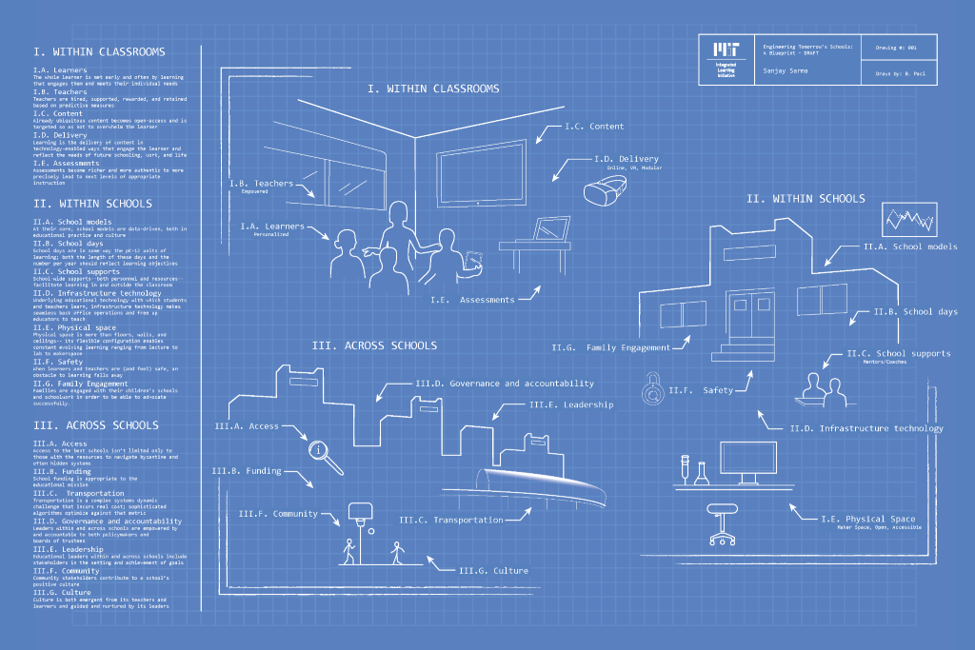
Schmidt Futures asked a simple but powerful question: in one page, what does MIT believe about pK-12 learning? The MIT Integrated Learning Initiative (MITili) framed its response, in the context of an educational system that has arguably plateaued, under the banner “From Neurons to Nations: Advancing the Science of Learning,” making the point that from how learning takes place in the brains of individuals to how national policy is set, the evidence of science must be a foundation and that the resulting research alone isn’t sufficient without translation to educator-embraced practice.
MITili extended this answer to outline existing and needed research filling out a “within classrooms, within schools, across schools” model. This research addresses subjects as diverse as learners, teachers, and content (“within classrooms”), school models and infrastructure technology (“within schools”), and access and leadership (“across schools”).
MITili formed a “Project Blueprint” team composed of faculty, researchers, students, and staff. This team set out to accomplish three main tasks: (1) develop a white paper laying out an MIT perspective on how learner-focused, educator-centered, and technology-powered learning engineering can enable educational change, (2) design representative fundable projects that would apply learning engineering to address specific educational challenges, and (3) begin exploratory research on one such challenge.